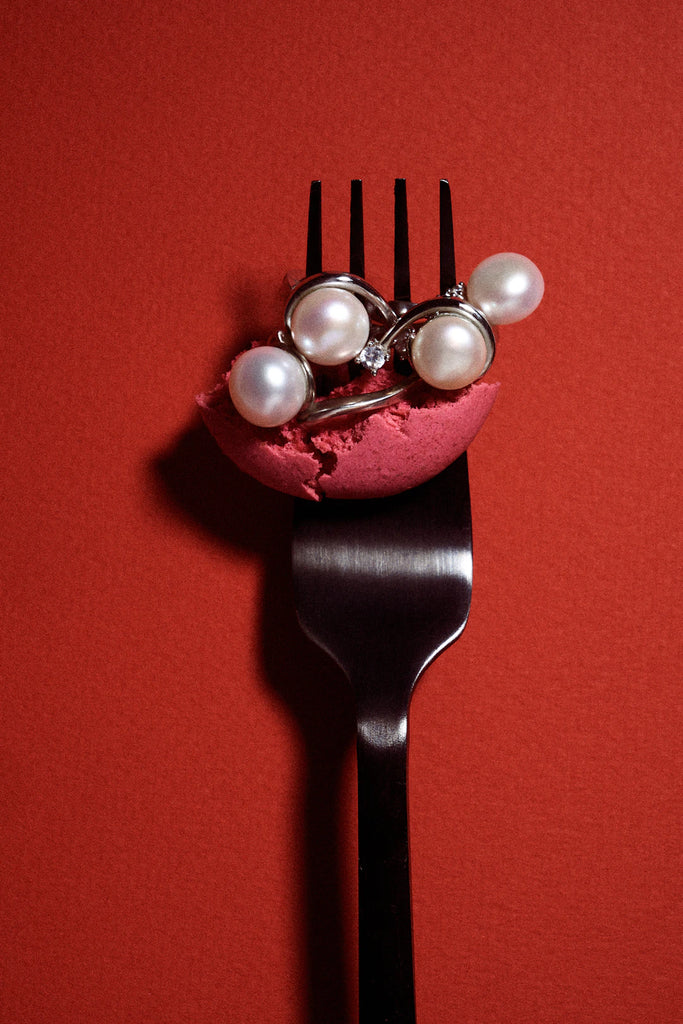The Allure of Tahitian Pearls: History & Culture Unveiled

Frequently Asked Questions
1. What are black Tahitian pearls?
2. How are Tahitian pearls formed?
3. What is the cultural significance of Tahitian pearls?
4. How can I care for my black Tahitian pearls?
5. Where can I buy authentic black Tahitian pearls?
Nestled in the azure waters of the South Pacific, the captivating Tahitian pearls have intrigued jewelry lovers and collectors alike. These natural marvels, with their unique colors and iridescent luster, are often regarded as the "crown jewels" of the ocean. But beyond their beauty lies a rich history and profound cultural significance that defines black Tahitian pearls. In this article, we will explore the journey of these exquisite gems, from their origins to their place in modern culture.
The Origins of Tahitian Pearls
Tahitian pearls, known primarily for their glamorous black hues, are predominantly cultivated in the lagoons of French Polynesia, specifically in the Tuamotu Archipelago. The Tahitian pearl is formed within the black-lipped oyster, scientifically known as Pinctada margaritifera. This oyster thrives in warm, tropical waters, making the region a premier location for pearl farming.
The first recorded attempts to cultivate these pearls date back to the early 1960s. Whereas most pearls are produced by the Akoya oyster and are usually white or cream in color, Tahitian pearls stand out with their dark hues and mesmerizing overtones. The introduction of pearl farming not only revolutionized the pearl industry but also established Tahiti as a leader in the worldwide pearl market.
Natural Beauty and Unique Characteristics
Black Tahitian pearls are defined by their stunning colors and shades, ranging from deep black to vibrant greens, blues, and even exotic purples. This diversity is a product of the unique environment in which they are cultivated, as well as the genetic variations of the oysters. Each pearl, thus, tells a story, with its unique characteristics making it one-of-a-kind.
Other notable qualities include:
- Luster: Tahitian pearls are renowned for their exceptional luster, which gives them a striking glow.
- Surface Quality: While no pearl is flawless, the surface quality of black Tahitian pearls can vary tremendously. High-quality pearls often exhibit minimal blemishing, contributing to their value.
- Size: Tahitian pearls are typically larger than their Akoya counterparts, with sizes ranging from 8mm to over 20mm.
- Shape: Besides being round, Tahitian pearls can also be found in baroque, semi-baroque, and drop shapes, adding to their diversity.
The Cultural Significance of Tahitian Pearls
In Polynesian culture, pearls hold a much deeper significance than mere adornment. They symbolize wealth, status, and beauty, playing an integral role in traditional ceremonies and cultural expressions. Historically, Tahitian pearls were gifted during important life events, serving as tokens of love, respect, and honor.
Myths and Legends
The allure of the black Tahitian pearl is reinforced by rich myths and legends that have been passed down through generations. One prominent legend speaks of the god Oro, who descended from the heavens and bestowed pearls upon the inhabitants of Tahiti as symbols of prosperity and abundance. This divine gift solidified the association between Tahitian pearls and divine beauty in the local culture.
Additionally, pearls have been often thought to bring good fortune and protection. They are sometimes incorporated in traditional attire for weddings or are worn by mothers during pregnancy, believed to impart wisdom and strength to the unborn child.
Contemporary Cultural Practices
In modern times, the significance of black Tahitian pearls persists, transcending traditional practices. They have become a popular choice for luxury jewelry, representing elegance and style on global platforms. Local artisans meticulously craft jewelry that showcases these pearls, reflecting the heritage and artistry of Polynesian culture.
- Weddings: Black Tahitian pearls are increasingly popular in bridal jewelry, symbolizing eternal love and commitment.
- Celebrations: These pearls are often gifted during special occasions, reinforcing bonds among family and friends.
- Artisan Craftsmanship: Local jewelers pride themselves on creating unique pieces that showcase the beauty of black Tahitian pearls, supporting cultural expression and preserving traditional techniques.
The Environmental Impact of Pearl Farming
As the demand for black Tahitian pearls grows, so does the responsibility of pearl farmers to maintain sustainable practices. Responsible farming not only preserves the delicate marine ecosystem but also ensures the longevity of pearl harvesting for future generations.
Sustainable Practices in Pearl Farming
Several initiatives have been established to promote environmentally friendly pearl farming techniques. These include:
- Minimizing Environmental Damage: Farmers are encouraged to use methods that minimize harm to the surrounding coral reefs and marine life.
- Community Engagement: Local communities are often involved in pearl farming, benefiting economically while fostering pride in their cultural heritage.
- Certification Programs: Various organizations have developed standards and certifications for sustainable pearl farming, helping consumers make informed choices.
The Future of Tahitian Pearls
The black Tahitian pearl market continues to evolve, where sustainability and authenticity become paramount. As newer generations of pearl farmers embrace innovative technology coupled with traditional methods, the future for black Tahitian pearls looks promising.
Moreover, with the increasing global emphasis on ethical consumption, it's essential for consumers to support brands that engage in responsible practices. By investing in black Tahitian pearls, you are not only purchasing a piece of natural beauty but also supporting a sustainable and culturally rich industry.
Tips for Caring for Your Black Tahitian Pearls
Owning black Tahitian pearls is a privilege that comes with responsibility. To maintain their beauty and luster, it's essential to follow some care tips:
- Avoid Chemicals: Keep pearls away from perfumes, lotions, and cleaning products as they can damage the surface.
- Clean Gently: Use a soft, damp cloth to wipe down pearls after wearing them to remove oils and dirt.
- Storage: Store pearls separately from other jewelry to prevent scratching, preferably in a soft pouch or a lined jewelry box.
- Regular Wear: Interestingly, wearing pearls often can help maintain their natural oils, contributing to their overall longevity.
Where to Buy Black Tahitian Pearls
Purchasing black Tahitian pearls requires an eye for quality and authenticity. As the market expands, discerning buyers must ensure they are purchasing from reputable sources. Look for stores that provide detailed information on their pearls, including:
- Origin: Ensure you're buying genuine Tahitian pearls from French Polynesia.
- Certification: Seek pearls that come with documentation proving their quality and authenticity.
- Return Policies: A good retailer should offer a solid return policy should the pearls not meet your expectations.
At The South Sea Pearl, we pride ourselves on offering exquisite black Tahitian pearls while preserving their cultural essence and environmental integrity. Each pearl is carefully selected for its quality and beauty, ensuring that every piece of jewelry it adorns reflects the legacy of this treasured gem.
A Final Thought: Embracing the Beauty and Legacy of Tahitian Pearls
The history and cultural significance of black Tahitian pearls go far beyond their stunning appearance. These gems embody the heart and soul of the Polynesian spirit, serving as symbols of love, honor, and resilience. As you consider adding a piece of this enchanting experience to your collection, remember that you are not just purchasing a pearl; you are embracing a rich history and supporting a sustainable legacy for generations to come.

Laat een reactie achter